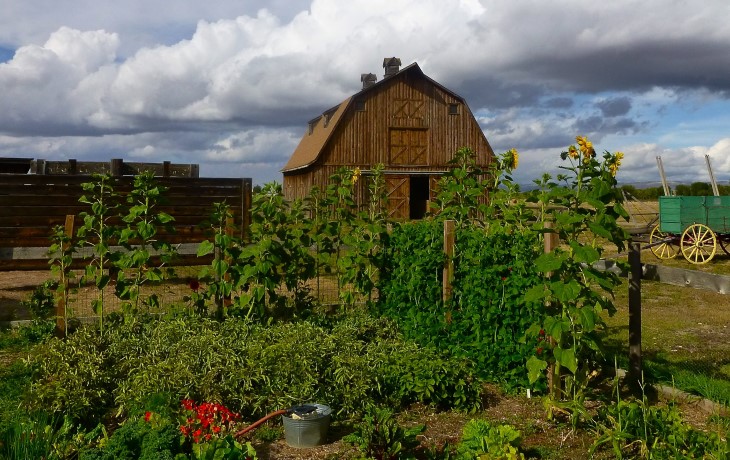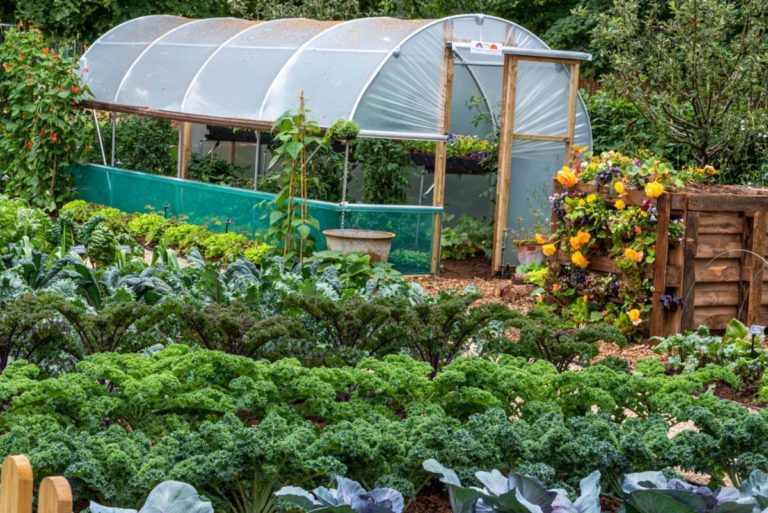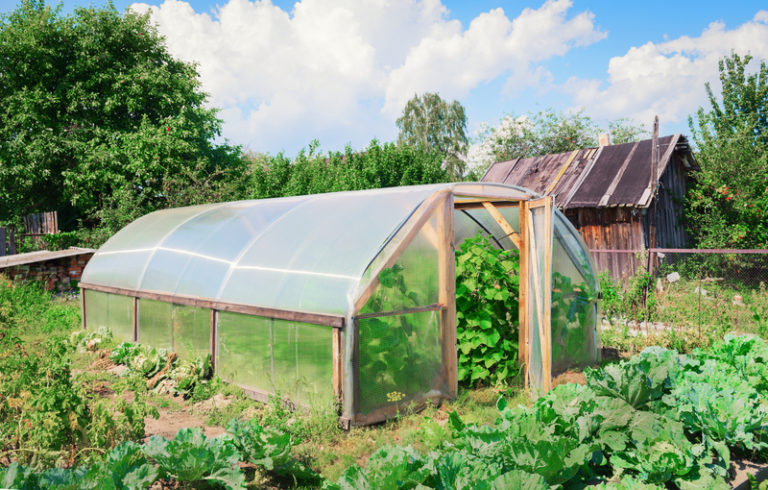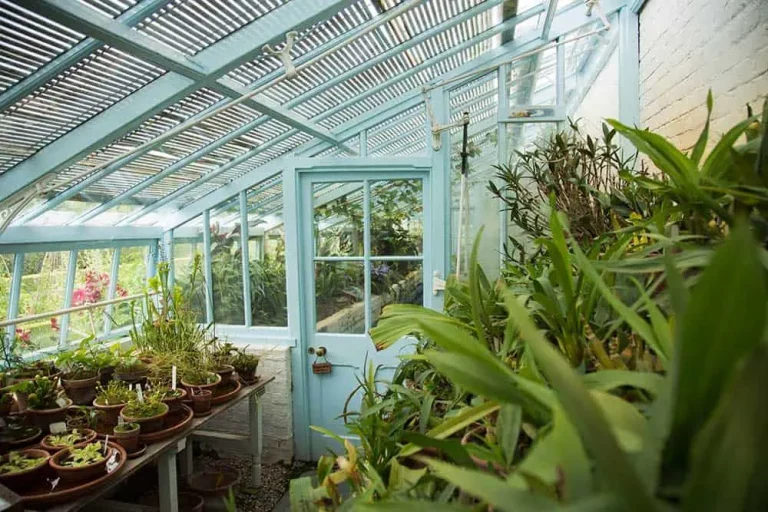Off-grid living often requires innovative solutions to grow food sustainably.
One such solution is vertical farming, which allows you to cultivate crops in vertically stacked layers or rows, effectively maximizing the use of space and sunlight.
By implementing a vertical farming system in your off-grid home, you can significantly increase your crop yields while minimizing land usage and resource inputs.
We will explore how to set up a successful vertical farm for off-grid living, including tips on lighting, irrigation systems, crop selection, and more.
Whether you have a small backyard or a large homestead, you can use these techniques to optimize your space and produce fresh, healthy crops year-round.
Choose the Right Crops
Select crops that are well-suited for vertical farming, such as leafy greens, herbs, and vining crops like tomatoes and cucumbers. These crops can be grown using hydroponics, aeroponics, or other soilless systems that make use of vertical space.
Leafy greens like lettuce, kale, and spinach are ideal for vertical farming due to their compact growth habit and high yields.
These crops can be grown in hydroponic systems, which use nutrient-rich water to support plant growth rather than soil.
Herbs like basil, parsley, and cilantro are also well-suited for vertical farming, as they require minimal space and can be grown in the same hydroponic systems as leafy greens.
Vining crops like tomatoes and cucumbers can also be grown using aeroponics, a system that suspends the roots of the plants in the air and delivers nutrient-rich mist to the leaves.
This allows for a more efficient use of space, as the plants can grow upwards and outwards while still maintaining a compact footprint.
When selecting crops for your vertical farm, consider the space and resources available to you, as well as the market demand for each crop.
By choosing the right crops and utilizing the appropriate growing systems, you can create a thriving and profitable vertical farm that produces fresh, healthy produce all year round.
Use Trellises and Cages
Train vining crops like tomatoes, peas, and cucumbers to grow up trellises or cages. This maximizes the use of vertical space and keeps the crops off the ground, reducing the risk of pests and diseases.
To make the most of your garden space, consider training your vining crops like tomatoes, peas, and cucumbers to grow up trellises or cages.
This not only maximizes the use of vertical space, but it also helps to keep the crops off the ground, reducing the risk of pests and diseases that can thrive in moist, soil-based environments.
By providing support for your vining crops, you can help them grow more efficiently and productively, resulting in higher yields and healthier plants.
Training your crops to grow up trellises or cages can help to improve air circulation and sunlight penetration, which can further benefit plant growth and overall health.
With a little bit of effort and the right equipment, you can easily train your vining crops to thrive in the vertical space of your garden, resulting in a more productive and healthy harvest.
Implement Hydroponics or Aeroponics
Hydroponics and aeroponics are ideal for vertical farming, as they allow plants to grow in a soilless medium and can be stacked vertically to maximize space. These systems can be designed to fit your specific growing needs and space constraints.
Hydroponics and aeroponics are revolutionizing the way we grow crops, especially in vertically-stacked farming systems.
By eliminating the need for soil, these soilless growing methods enable plants to thrive in tight spaces while maximizing yield.
Hydroponic systems, which support plants with a nutrient-rich solution, and aeroponic systems, which deliver the solution through a fine mist, both offer unparalleled control over nutrient delivery and growth factors.
This allows farmers to tailor their systems to meet the specific needs of each crop, ensuring optimal growth and health.
Whether you have a small backyard or a large commercial space, hydroponics and aeroponics can be scaled up or down to fit your unique growing needs and space constraints.
With the right system, you can grow a wide variety of crops, from leafy greens and herbs to fruiting vegetables and even grains, all while conserving water and minimizing land use.
So why wait?
Embrace the future of farming and start growing today!
Stack Crops
Stack crops on top of each other to maximize space. For example, you can grow leafy greens like kale or spinach on the bottom, followed by vining crops like tomatoes or cucumbers, and then another layer of leafy greens on top.
Stacking crops on top of each other is a great way to maximize space in your garden, and it’s particularly effective when growing a variety of crops.
For instance, you can start by planting leafy greens like kale or spinach on the bottom layer, which will provide a solid foundation for your garden.
These plants will grow nicely in the shade of any taller crops, and they’ll be able to draw nutrients from the soil without competing with the taller plants for space.
Next, you can plant vining crops like tomatoes or cucumbers, which will use the trellis or other support to grow upwards and spread out.
These plants will benefit from the shade provided by the leafy greens, and they’ll also be able to use the nutrients that the greens have made available.
You can top off your layered garden with another layer of leafy greens, which will provide additional shade and nutrients for the vining crops.
By stacking crops in this way, you can fit more plants into a smaller space, and you’ll be able to enjoy a diverse and productive garden.
Utilize Vertical Spaces
Make use of all vertical spaces in your off-grid living setup, such as walls, corners, and ceilings. Use wall-mounted planters or hanging baskets to grow vining crops, herbs, and leafy greens.
Maximize Your Vertical Space for a Thriving Off-Grid Living Setup
To create a thriving off-grid living setup, it’s essential to make the most of your vertical space.
By incorporating wall-mounted planters and hanging baskets, you can grow a variety of crops, including vining crops, herbs, and leafy greens.
Wall-mounted planters offer an excellent opportunity to cultivate plants such as peas, beans, and cucumbers, which can be trained to climb up the supports or trellises.
For leafy greens and herbs, consider using hanging baskets or pockets, which can be hung from the ceiling or placed in corners.
This not only maximizes your vertical space but also provides an attractive and functional addition to your off-grid living space.
By using wall-mounted planters and hanging baskets, you can enjoy the benefits of natural lighting and air circulation, promoting healthy plant growth and reducing the need for artificial lighting and heating.
Embrace the potential of your vertical space and elevate your off-grid living setup to new heights!
Use Space-Saving Varieties
Choose space-saving varieties of crops, such as dwarf or bush varieties, that grow well in small spaces and can be trained to grow up trellises or cages. These varieties are perfect for maximizing space in off-grid living setups.
When it comes to maximizing space in off-grid living setups, choosing the right variety of crops is essential.
Dwarf or bush varieties of crops are ideal for small spaces, as they grow well in tight spaces and can be trained to grow up trellises or cages.
These varieties are specifically bred for their compact growth habit and high yield, making them perfect for small-space gardening.
Some examples of space-saving crops include dwarf citrus trees, bush tomatoes, and compact varieties of peas and beans.
By selecting these varieties, you can make the most of your available space and enjoy a bountiful harvest.
These crops can be trained to grow up trellises or cages, further maximizing space and increasing yields.
With a little creativity and planning, you can enjoy a thriving garden in even the smallest of spaces.
Implement NFT (Nutrient Film Technique) System
NFT system is a hydroponic method that utilizes a continuous flow of nutrient-rich water to feed crops. This system is ideal for growing a wide range of crops, including leafy greens, vining crops, and herbs.
The NFT (Nutrient Film Technique) system is a hydroponic method that employs a continuous flow of nutrient-rich water to nourish crops, making it an ideal choice for growing a diverse range of crops, including leafy greens, vining crops, and herbs.
This system utilizes a shallow stream of water containing essential nutrients to feed the plants, providing them with the necessary resources for optimal growth.
The controlled flow of water ensures that the roots receive a consistent supply of nutrients, promoting healthy growth and high yields.
The NFT system is particularly well-suited for growing leafy greens like lettuce, kale, and spinach, as well as vining crops like cherry tomatoes and cucumbers.
Herbs like basil and mint thrive in this system due to the consistent supply of moisture and nutrients.
Overall, the NFT system offers a highly efficient and versatile method for growing a wide range of crops.
Optimize Lighting
Proper lighting is essential for off-grid vertical farming. Use LED grow lights that are specifically designed for growing crops indoors and provide the necessary spectrum and intensity for optimal growth.
Proper lighting is a important factor in off-grid vertical farming, as it directly affects the growth and yield of crops.
LED grow lights are the preferred choice for indoor growing, as they are specifically designed to provide the necessary spectrum and intensity for optimal plant growth.
These lights are engineered to emit specific wavelengths of light that are tailored to the needs of different types of plants, allowing for optimal photosynthesis and growth.
For instance, red and blue light are important for leafy greens like lettuce and kale, while blue and white light are better for fruiting plants like tomatoes and peppers.
Moreover, LED grow lights are highly energy-efficient, which is essential for off-grid vertical farming systems that rely on renewable energy sources like solar or wind power.
These lights use less power and produce less heat than traditional HPS (high-pressure sodium) lights, making them a more sustainable option for indoor growing.
LED grow lights are often more compact and lighter than HPS lights, making them easier to install and maintain in a vertical farming system.
Proper lighting is a critical aspect of off-grid vertical farming, and LED grow lights are the best choice for providing the necessary spectrum and intensity for optimal plant growth while minimizing energy consumption and heat production.
By investing in high-quality LED grow lights, off-grid vertical farmers can ensure a healthy and productive crop yield, making their farming system more sustainable and profitable in the long run.
Want More? Dive Deeper Here!
Hey there! If you’re the type who loves going down the rabbit hole of information (like we do), you’re in the right spot. We’ve pulled together some cool reads and resources that dive a bit deeper into the stuff we chat about on our site. Whether you’re just killing time or super into the topic, these picks might just be what you’re looking for. Happy reading!






